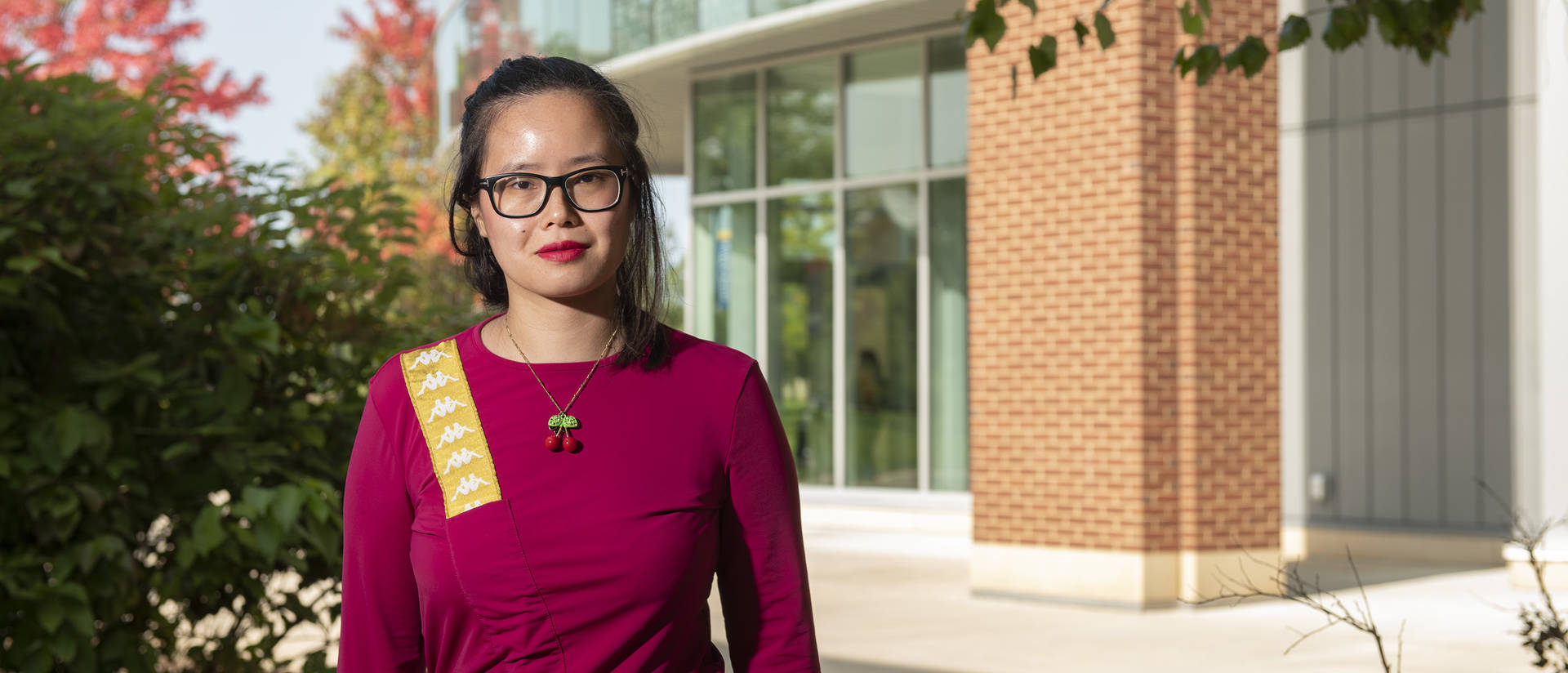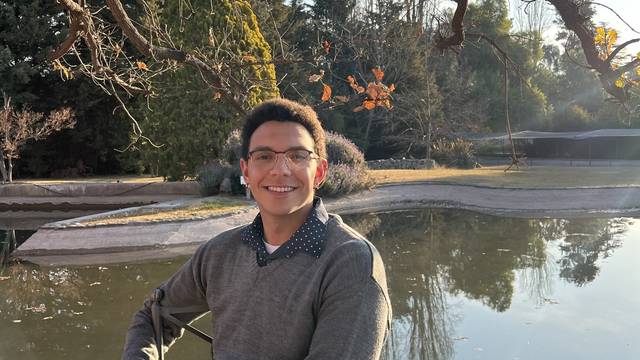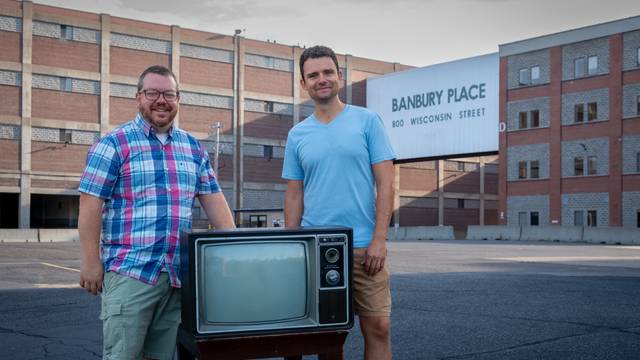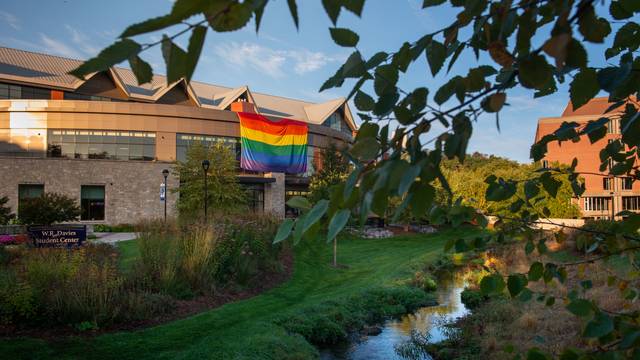Creation is hard. Making something where there used to be nothing, and assembling something new without a blueprint for it, require both technical skill and improvisation. “Even something as seemingly simple as a name” takes a long time and a surprising amount of work to think up, says Dr. Dorothy Chan, a creative writing professor at UW-Eau Claire as well as the editor-in-chief and co-founder of Honey Literary, Inc.
Dr. Chan told me she was “very, very tired” of a literary landscape largely dominated by white, cisgendered, and heterosexual men, which she says filters non-white and non-male writers through an “exclusionary lens.” Honey Literary started as a tweet she sent out “on a whim,” expressing her desire for a journal centered around BIWOC creators. But that tweet created an unexpected response. Other women of color reached out to her with offers of support, including her business partner, Rita Mookerjee. Dr. Mookerjee became the journal’s co-founder, and she worked with Dr. Chan to craft the goals of Honey Literary. Dr. Chan created Honey Literary as an anti-racist and intersectional feminist journal, led by women of color, with the goal of creating a journal whose readers and writers would both “feel safe.”
After “a lot of poetic thought,” Dr. Chan decided to name her new journal “Honey” because it is such a flexible and poetic term, calling to mind disparate and sensory ideas like bees, flowers, the queen, and the hive. Honey Literary’s submission categories, such as Valentines and Animals, often blur traditional genre lines, instead collecting them based on particular subject matter. The journal looks for “quality, innovative, diverse work” within a wide range of topics. In particular, Dr. Chan identifies the “element of surprise” as the key feature she looks for in submissions; that is, addressing a topic, or using a form, in a new way. Skill and improvisation.
Honey Literary’s masthead includes editors from all over the United States, showing how expansive poetic communities can be. Both as a staff member at UWEC and as editor-in-chief of Honey Literary, Dr. Chan sees herself not so much in the context of Chippewa Valley as she does in terms of her and her journal’s “extended national platform”—and, indeed, its international platform, since it frequently publishes writers and addresses topics from outside the U.S.
Honey Literary, Inc. releases biannually and accepts submissions with no fee. Submissions for its third issue are accepted through December 1st, and will be released sometime in February of 2022. The majority of Honey Literary’s publications are from BIPOC writers, but they also “welcome submissions from white allies as long as they have a demonstrable connection to our mission statement,” which can be read in greater detail on their website (https://honeyliterary.com/). You can also go there to find pieces from Issues 1 and 2 of the journal, artist spotlights, and more!

And Dr. Chan is not the only UWEC faculty member to have recently founded a journal. Professor B.J. Hollars, another creative writing professor, named his journal after the intersection of South Barstow Street and East Grand Avenue. On Barstow & Grand’s website, they explain the name as “a balancing of history and progress to bring new energy to the area and its residents...[p]rogress rooted in history and tradition.” It evokes the intersection of tradition and innovation, and the breathing of new life into old forms.
Eric Rasmussen, Barstow & Grand’s editor, says he joined Professor Hollars in kicking off Barstow & Grand out of a desire to benefit local writers with “a professionally-run journal where locals could get some experience submitting work and pick up their first publication credits.” More geographically focused than Honey Literary, the journal initially accepted submissions specifically from Chippewa Valley residents. However, having found that to be too small of a pool, they have since expanded their focus to include any writer with connections to the upper Midwest region. Eric told me that the journal seeks to connect with both readers and writers in terms of the way Midwestern cultures, experiences, and residents express themselves in writing. Rather than a way to escape the Midwest, Barstow & Grand is a celebration and rediscovery of it, “someone sitting at Acoustic Café or on a bench in Phoenix Park, discovering new voices and ways to see the place where we live.”
Barstow & Grand publishes all kinds of writing, and seeks creative, professional-quality work that presents new stories in the “clean, polished...manner expected by the larger publishing world.” They seek to publish “new ideas, stories we’ve never seen before, and poems that forge new connections and images.” Like most journals, Barstow & Grand requires a submission fee, but Eric stresses that they “will continue to seek ways to ensure that the submission fee is not a barrier” to “anyone in our community.”
Part of this community identity includes a strong connection to UWEC. Eric particularly expressed his love of the university’s “strong and vibrant creative community,” saying that, especially as a recipient of two degrees from Eau Claire, he considers that “all local artists and writers owe something to UWEC.” Both students and staff have submitted pieces and had them published in every issue of Barstow & Grand, and I was able to interview a few of the students who will have pieces in the upcoming Issue #5.
Bryson Wilkins is a creative writing major who submitted a fictional short story about a human-sacrificing cult in Texas. This piece was originally written for a fiction workshop with Professor Molly Patterson, who suggested that her students submit to Barstow & Grand.
This was Bryson’s first time being published in a journal, which he describes as “my first story being published in something meaningful.” He particularly identifies the experience as helpful for a future portfolio, saying it “solidifies that my writing is good enough to be published.” He also expressed a desire to publish more in the future, potentially even in novel form.
I was also accepted to Issue #5 of Barstow & Grand. I submitted a revision of a piece I had written for a speculative fiction workshop (heavily edited, both for length and for quality). The piece was a fantasy story about witches, love potions, and all that jazz called Love and Magic, which I had written because I was tired of all the marriages I saw in fiction falling apart.
I had heard about Barstow & Grand through the Chippewa Valley Writers’ Guild (CVWG), and submitted to it at Molly’s recommendation. One of my goals is to publish a larger work (i.e. a book), so this step forward is very exciting!
Katherine Wilkins submitted poetry, fiction, and creative essays to NOTA for seven semesters in a row, ultimately publishing nine pieces. Two years ago, she heard about Barstow & Grand in an intermediate fiction class, and was attracted to it because of how local it was to the area. She submitted then and was rejected, but will now have five poems—some written for class, others not—in Issue #5. She describes her process between submissions as one of “trying to see the difference” between her writing then and her writing now.
Overall, Katherine picked the poems she submitted because they are her best poems, but they also share common themes of nature, science, and geology. As a (now graduated) geology major with a creative writing minor, Katherine says she has “a huge passion” for creative writing, finding it “a way to blend art and science.” She found her publications both in NOTA and in Barstow & Grand encouraging, since it shows that this integration is “something people want to read.”
Elise Eystad is an English-Creative Writing major with a certificate in TEFL (Teaching English as a Foreign Language). She heard about Barstow & Grand through an internship at the Chippewa Valley Writers Guild and “thought that it would be a great first step for me.” Having had two poems previously published in NOTA, Elise’s poem will be her first off-campus publication. The poem was written last year for her Intermediate Poetry class, its title taken from a line from Bright Dead Things by Ada Limón: “So We Ordered Another Beer and Said, Life is Long.” Elise identifies her poem as “a love-letter to a lifelong friend” with “themes of steady friendship as one grows into new aspirations.” It also has strong ties to the Midwest, as she references Eau Claire and Leinenkugel’s beer throughout the piece.
Elise speaks well of her involvement with both UWEC and Barstow & Grand, saying her experiences with writing and publication have “done wonders for my confidence and creativity,” opening her eyes “to other avenues in the field of editing and publishing.” She dreams of publishing a full work. “Hopefully,” she says, “there will be many more publications to come!”
Issue #5 of Barstow & Grand will be released on Wednesday, November 17th! Eric mentioned that this issue will have some fantasy and horror fiction in it, which is uncommon (and exciting) for a literary journal. You can pick up a copy at the release party at 7:00 November 17th at Lazy Monk Brewing in Eau Claire, so check out the Barstow & Grand website (https://www.barstowandgrand.com/) for more information as the date approaches!
Eau Claire and its university are increasingly a place for creative writers to gather and publish, examining the past and reworking it in their writing. Old and new; tradition and innovation; skill and improvisation.



